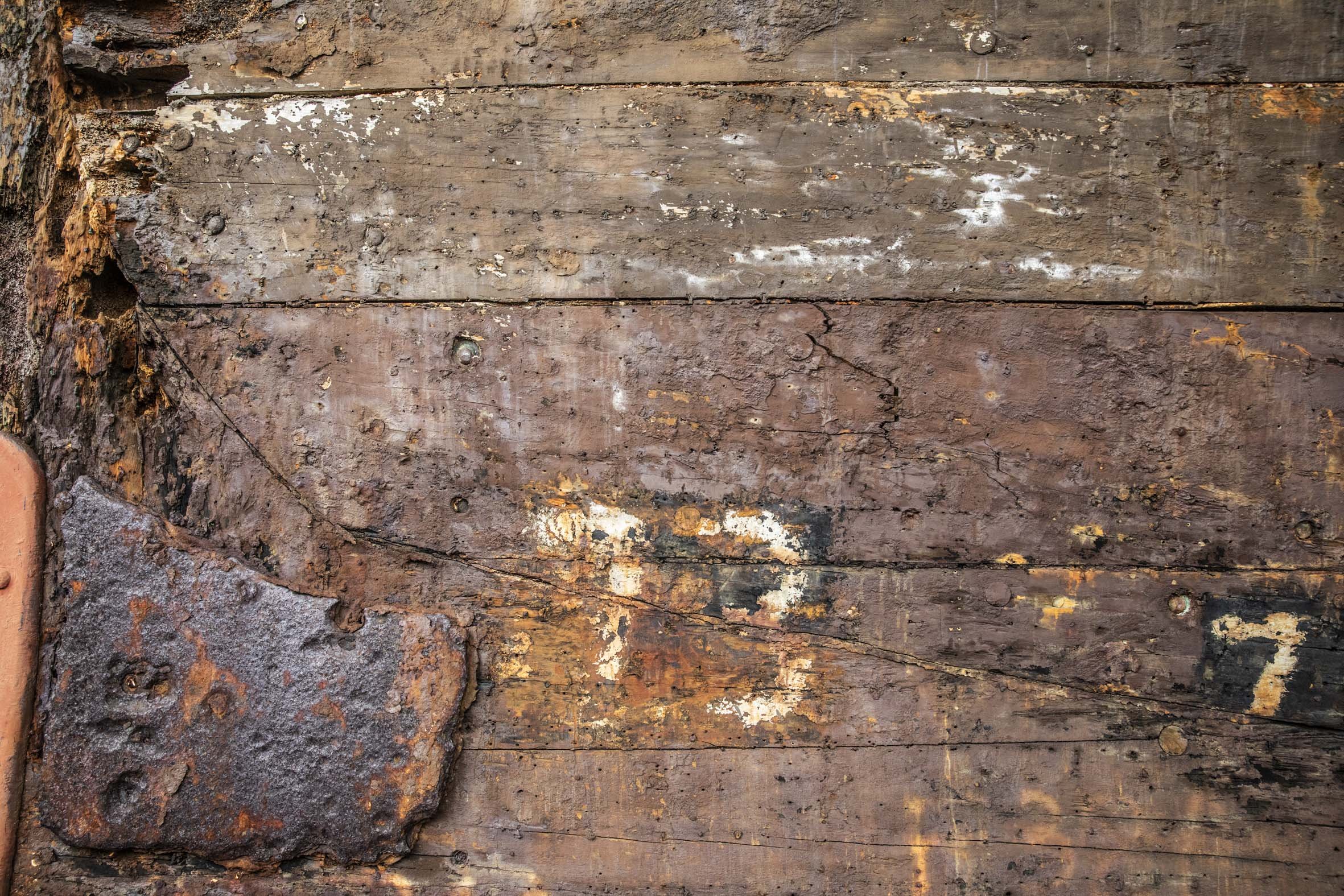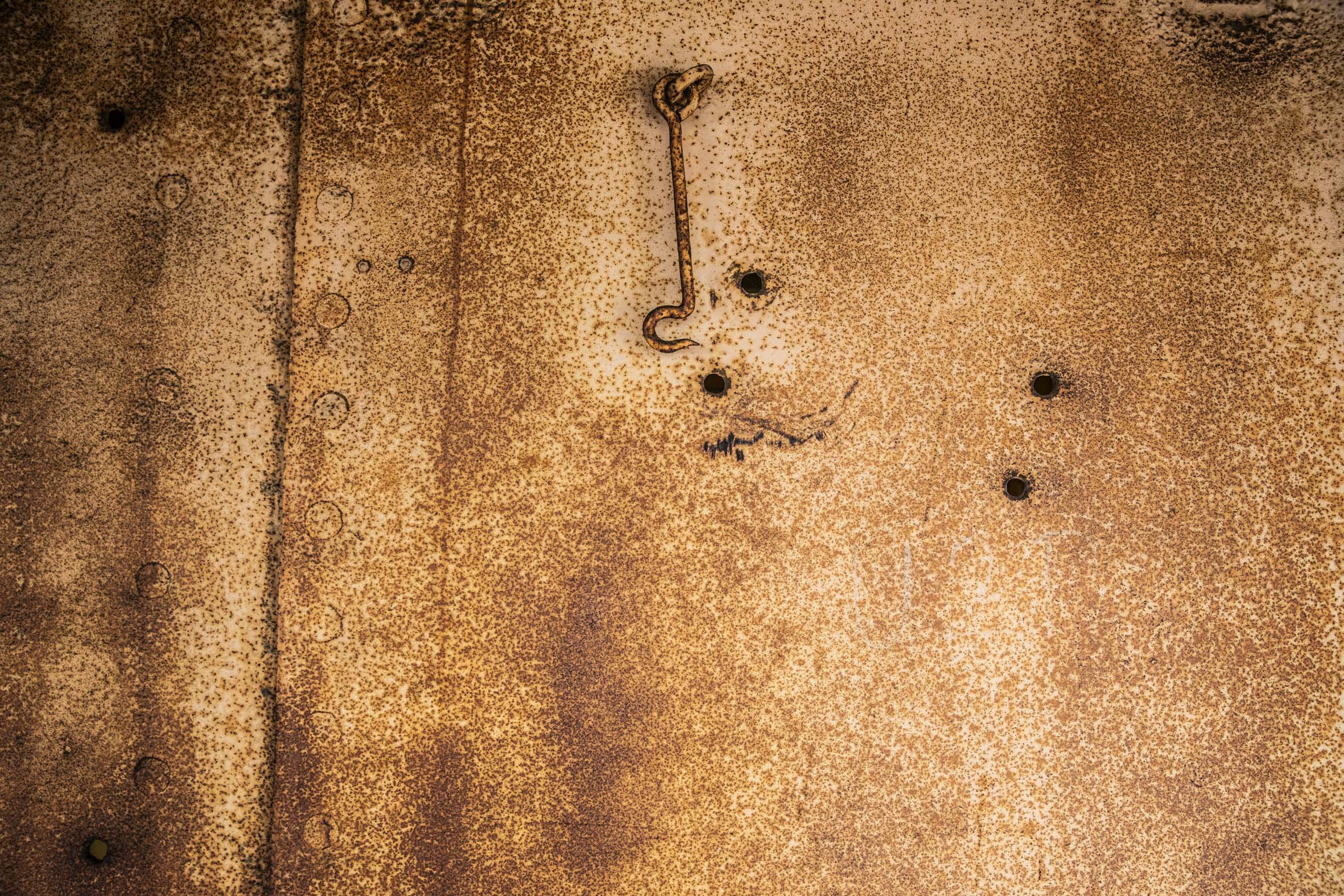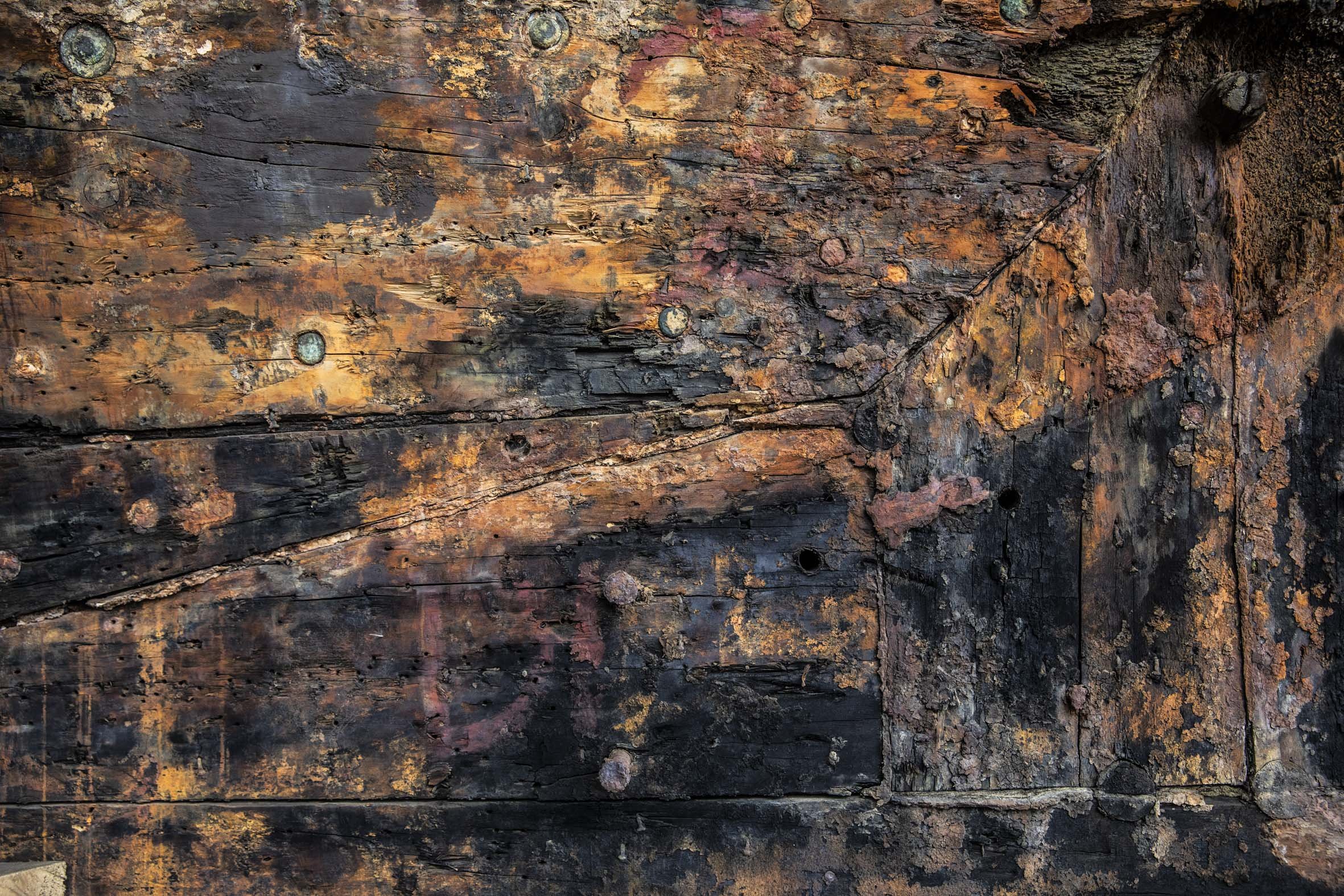Meeting TOROA
We first wrote about the Steam Ferry TOROA back in July 2022. Although at the time, I had a long chat with Peter McCurdy, one of the driving forces behind the ferry’s restoration, I didn’t actually get the chance to see this remarkable vessel in the flesh. So when I mentioned to Peter I would be attending the recent Auckland Wooden Boat Festival, he arranged for Paul Stephanus, the Director of the Australian Wooden Boat Festival, and myself to visit the restoration site in Henderson, in the western suburbs of Auckland.
Driving out of Auckland along the North Western Motorway, I get the feeling that this isn’t the natural habitat of a 131ft double ended passenger steam ferry. But as we turn off at Junction 19 and double back over the six lanes of traffic, there she is, nestled in beside a dusty aggregate supply yard and the humming traffic.
One of the issues that Peter and his team have is one of perception. So much of the work they have been doing over the last few years has been internal, resulting in the impression that not much progress is being made. TOROA is a composite construction in the old sense —timber planking over steel framing and bulkheads. Much of the original steelwork was badly corroded and has had to be renewed virtually throughout the hull.
And to preserve integrity of structure and shape, renewal of the steelwork had to be done from the inside out, before tackling restoration of the hull and deck planking. And so, an extensive body of restoration work has been invisible to the passing motorist.
Those of you who read SWS regularly may know of our efforts to try to make sure that the limited budgets out there for restoration projects get directed to the most worthy vessels. Too often, enormous funds and time are spent bringing a vessel back to life, only to realise that she was only ever a mediocre example of her original genre.
A few minutes with Peter standing in front of the monumental hull, dispels any suggestion that this might be the case for TOROA.
She plied the waters between downtown Auckland and Devonport for 55 years from 1925 until 1980, rarely turning around! With a propeller and rudder at both ends she went back and forwards across the Waitemata, port becoming starboard, after every stop. Constructed with 3-inch kauri timber planking, bolted to steel bulb-angle framing, with steel bulkheads and main-deck beams, she ran a triple-expansion steam engine, by Aitcheson, Blair Ltd, Clydebank, Scotland. With a crew of just four, (skipper, deck-hand, engineer, stoker) she was rated to carry 1221 passengers in enclosed waters, providing a vital connection between North Shore and Auckland City until the harbour bridge opened in 1959. The TOROA was the second to last to stay in service – the Kestrel, repowered with a diesel engine in the 1950s, carried on another 22 years. With the scrapping of the KESTREL in 2022, the TOROA is the very last survivor of 120 years of steam ferry operation on the Waitemata Harbour and as such is a tangible piece of the history and development of Auckland. She is absolutely irreplaceable.
There’s plenty of great technical information on the restoration process on the TOROA’s own website so we won’t go into that here, suffice to say that each step of the way is painstakingly researched and executed to the highest standards.
What I’m personally more interested in is the mentality… the relentless determination.. that drives this group of volunteers to show up every week and chip away at what must at times seem like an infinite task. Standing inside her hull, I can see the tens of thousands of hours of work that has gone into replacing the ribs, bulkheads and beams. And yet this is only a beginning. Once complete every temporary bolt through to the old planking, damaged by teredo and gribble, and by lye generated by galvanic action from the original copper sheathing, and by rot from freshwater incursion, must now be undone and new planking fashioned steamed and bent into place and fastened. And then there’s the small matters of installing her engine and boiler, her decks, her superstructure…and on and on and on. While the vision for the restoration is always in mind — for the TOROA to again sail the Waitemata, in steam and in survey, as a working heritage excursion steamer — all the tasks to achieve that are not front of mind when working on the restoration day by day. That could be overwhelming.
The ability to address the task in front of you, without necessarily having an immediate end in sight is a special gift. Being absorbed in the work for its own sake, rather than for the instant gratification of an outcome, is a quality that we see less and less these days. And it’s something that should be admired.
Peter and his partner Robyn, discussing the restoration with Paul Stephanus, GM of the Australian Wooden Boat Festival.
Like all monumental projects such as this, the problems of funding and maintaining volunteer enthusiasm are a constant source of concern. It’s a David and Goliath struggle… but we all know who won that one in the end!
If you are interested in learning more about the TOROA restoration project or have skills or resources that you can donate then contact them via THIS FORM














